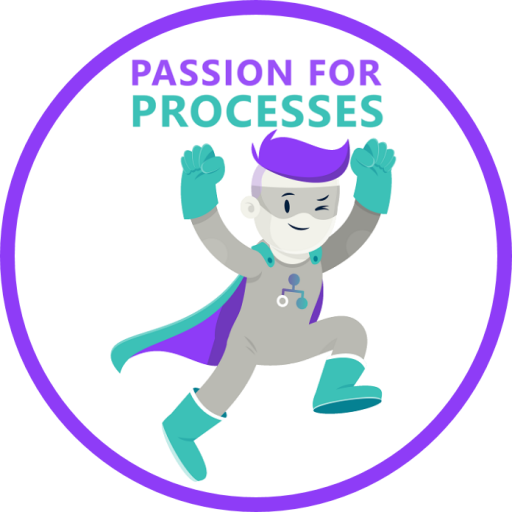Good afternoon,
I would like to know how position changes within the organization are handled in ARIS, without affecting the process diagrams linked to the objects of the positions with the previous names. Should a new table be created with the objects corresponding to the new positions, should the objects be updated in the existing table, or should the new positions be added to the same table with new objects? I would appreciate guidance on the best practice for making this type of change without affecting the diagrams in which the new positions are located.
Thank you in advance for your help!
Hi Alexandra,
Maybe you can elaborate a bit more on your question?
Like, what I don't quite understand is: typically role objects are used in process models (to avoid exactly what you describe); so, what I understand, in your BPMN diagrams you used positions in the lanes? And now, the positions shall remain while the underlying org-structure changes?
Further questions would be:
- what is your database structure: do you distinguish between modelling and publishing database?
- shall all changes be visible to everyone from "day 1" onwards?
- are the positions exactly the same only the "person-mapping" is different?
- do you need the "old" org-chart for comparison purposes (with the new one)?
Best,
Veronika
Hi Veronika,
Thank you for your response and for your helpful questions. I will clarify the situation further:
We have an area where the positions have changed, including both name changes and the addition of new roles. However, we want to retain the mappings that were made previously, as they are still linked to the old positions. The challenge is how to manage these changes without affecting the process diagrams that are linked to the objects representing the old positions.
To answer your questions:
Role objects vs. position objects: Yes, in our BPMN diagrams, we used positions in the lanes, and now the names of some positions have changed, and new ones have been added. We would like to keep the links to the old positions intact while reflecting the changes in the positions (names and number of roles).
Person mapping changes: The positions themselves are still the same in terms of responsibilities, but the person mapping has changed, so some positions now have different people assigned. However, the role of the position itself remains largely unchanged.
Need for old org-chart comparison: We would like to retain the previous organizational structure for comparison purposes, as some diagrams may need to reflect the old structure.
Given this, we’re trying to determine the best way to handle this transition in ARIS without losing the historical mappings. Should we update the existing table with the new position names or create a new table for the updated positions, while keeping the old ones intact for reference or create a folder for the old positions and create new objects for the new positions?
I would appreciate your guidance on the best approach for maintaining both the integrity of the old mappings and the changes in positions.
Thank you again for your help!
Best regards,
Hi Alexandra,
I think I kind of understand, now :)
The only way that comes to my mind is to create two positions, like "Head of Everything_old" and "Head of everything_new". Ideally, I would change the original position to "Head of Everything_old" in your org-chart and create "Head of everything_new" also in your org-chart. Then I would go process by process- wherever the "old" is incorrect, I would edit the object and take the "new". This way you ensure that you don't do any mass changes but only change the respective object.
Does that make sense to you?
Best,
Veronika
Hi,
yes, that's right. However, in the Architect, you have the possibility to distinguish per object between definition and occurrence copy. However, that is not possible (at least to my knowledge) in Connect, yet. So, my assumption is that it doesn't fully solve your problem.
Best,
Veronika
Hello Veronika,
the differentiation between definition and occurence copy is also available in Connect. But I thought we are talking about the linkage between position lanes in a BPMN and positions in an orgchart as special mechanism in the Enterprise version of the BPMN collaboration diagram.
Regards
Klemens
Hello Veronika,
during modelling entering the object's name the repository of the database is checked in the background. If there is already an object (or objects) with the same name(s) a window comes up automatically with a list of these objects where you can decide to take this object (occurence copy) or to create a new one (definition copy).
With <CR> a next window comes up
"New occurence" means here a definition copy.
Regards
Klemens
PS: This is available in all cloud versions and in Connect









